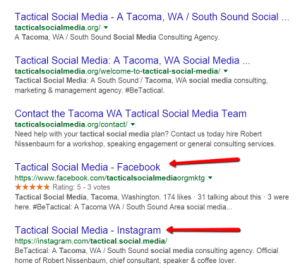One of the greatest advantages of social media is the ability to create a community and casually interact with customers. Not only does this build trust, it also humanizes companies by showcasing a personality and placing a “face” behind the brand. Taking time to setup a strategy for how the business will respond to customers will build a solid foundation for successful social customer care.
Tone: While engaging with customers (and potential customers) on social networks, it’s important to keep in mind that every conversation is reflective of the business. As a business owner or marketing manager, it is essential to maintain a consistent tone in all business communication. Whether it’s casual, professional, funny, deeply technical, or something else, responses to customers should adhere to this tone and also embody the basic principles of customer service. Being respectful and polite is always encouraged.
Define Responsibilities: It’s likely that more than one person will manage a business’s social media accounts and everyone should have a clear understanding of the tone. Those reading the responses will accept them as being the beliefs of the entire company – regardless if they came from an intern or the CEO. This is especially important to remember in crisis situations and when answering questions unrelated to regular customer support issues. It can help to define boundaries and identify specific times, topics, and/or social networks for each person representing a company on social media.
Timing: Every customer comment in social media should be treated as high priority. Respond and follow-up to comments as quickly as possible. During regular business hours, customers typically expect a response within one hour. Facebook Pages can display a special icon if they are “very responsive to messages.” To earn this badge the Page must respond to 90% of messages and each reply must be sent within 5 minutes or less. While it may seem like a tall task, it holds great value to current and potential customers.
Format: The way you respond to customers may differ on each social network and that’s a good thing. It’s ideal to consider the etiquette and best practices for each individual network. Most platforms provide the ability to tag users which is a nice advantage to ensure they see the reply quickly. Twitter does this by default to group conversations together. On Facebook, use the “reply” button to respond in-line. Tagging the person within the reply line also adds a personal touch. At the end of each response, signoff with a name or initials so that customers know who the individual is that they are speaking to.
Be Transparent: Always respond publicly to customers. This shows that the business is engaging with customers and it may answer a question for future browsers. Understandably, some information is better to be kept private and some conversations are better to have offline. An example of such a case is if a customer has a question specific to their account or otherwise regulated information. In that case, explain to the customer that you are happy to assist them publically and request them to continue the conversation via private message, phone, or email.
Be Attentive and Thorough: Address every aspect of the customer’s post. The real-time nature of social media provides the perfect platform for first contact resolutions. To save time, answer all of their questions and get to the point as quickly as possible. Make each response unique and avoid canned responses while always proofreading and keeping an eye out for spelling and grammar mistakes.
Be Positive and Courteous: A friendly smile and customer service go hand-in-hand. This translates to social media, although it can be more difficult to convey emotions in writing. True sincerity will shine through so be genuine and helpful. When a customer posts negative feedback, always apologize. In fact, thank them for raising the issue and use their feedback to improve others’ experiences.
Be Professional: A business’s responsibility is to its customers and without them the business wouldn’t exist. Even when faced with the worst criticism, it is essential to remain calm and professional. Avoid shouting matches and resolve the situation effectively. Show respect, follow through with promises, and confirm if any additional assistance is necessary.
Digital & Social Articles on Business 2 Community(98)








